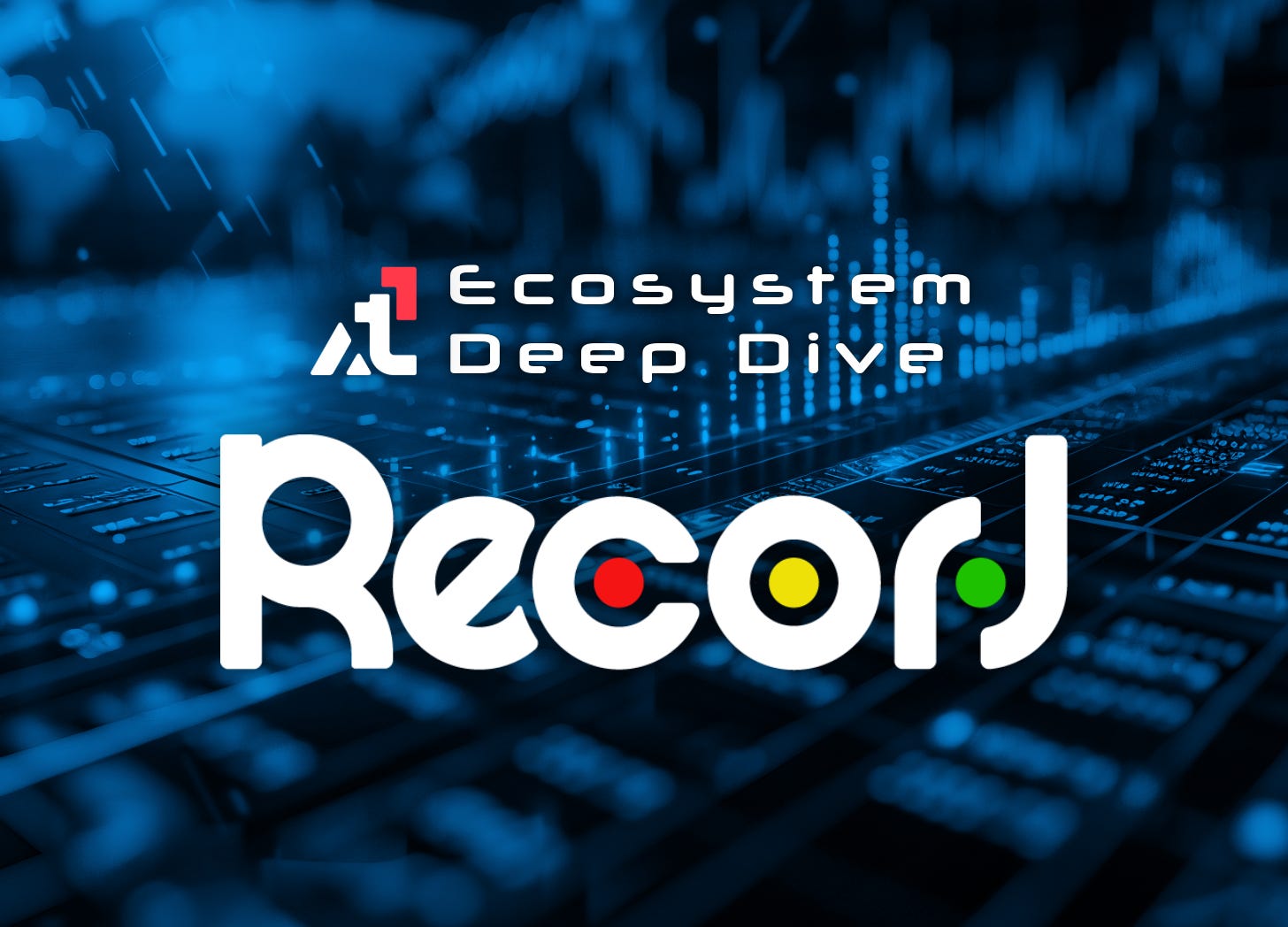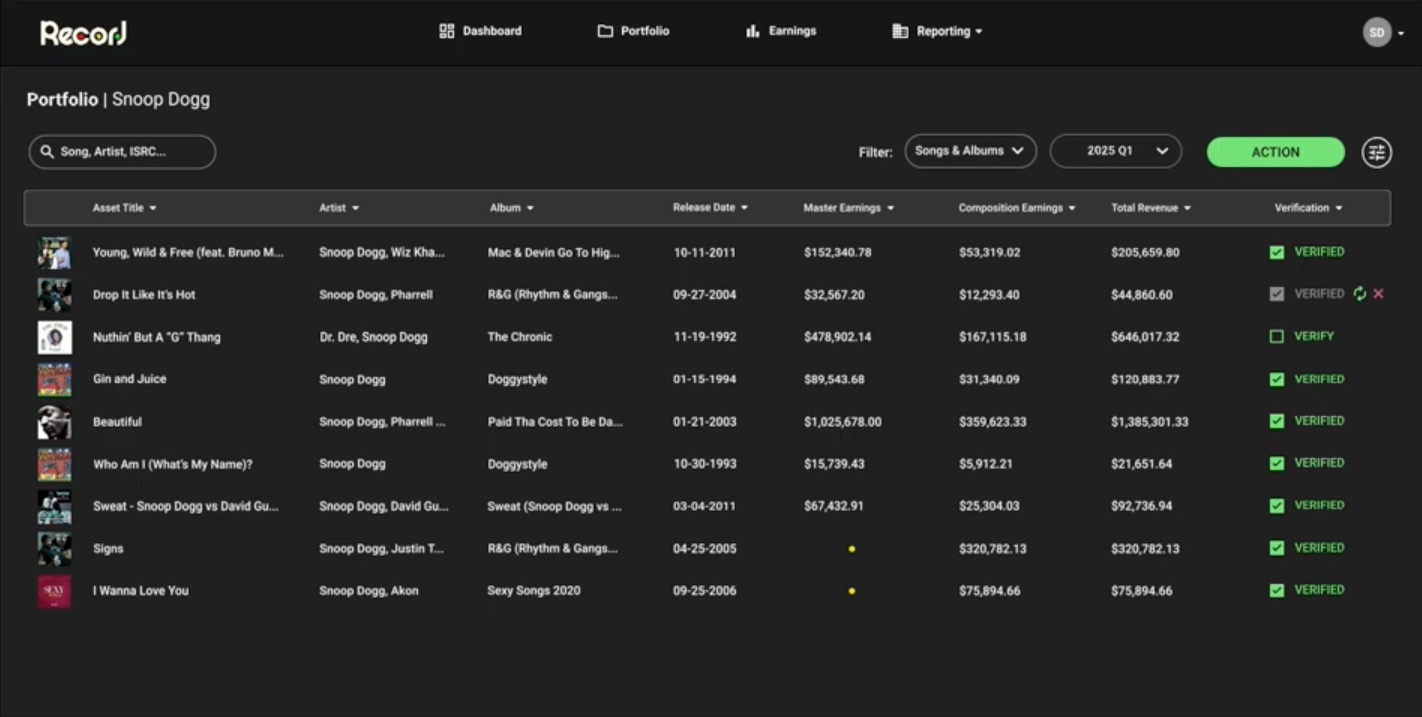Rewriting Rights: How Record and 11am Are Syncing Music With Money
Discover how Record is using Avalanche to fix broken royalty systems, streamline music payments, and give artists real-time visibility into their rights and earnings.
Music today spreads through algorithms, playlists, and platforms in minutes. But the systems that manage who gets paid haven’t kept up. They’re still stitched together by outdated infrastructure, slow middlemen, and disconnected systems that each handle only part of the process.
That’s the problem Record is solving. And now, they’re live on Avalanche, with 11am as their first label partner.
You can watch their Avalanche Summit presentation to hear directly from founder and CEO Travis Garrett as he outlines the system and the problem it’s designed to solve.
The Data Behind a Single Song
Every track splits into two: the sound recording (what you hear) and the composition (the music and lyrics). Each side has its own revenue streams, split percentages, contracts, and payout schedules. As songs gain traction, these layers multiply rapidly, and not neatly.
On average, 150,000 new tracks are uploaded to digital platforms daily. Combined with inconsistent metadata across regions and platforms, this results in a system that loses billions. In fact, around $2.5 billion in royalties goes unclaimed each year.
This slide from Record’s Avalanche Summit talk clearly illustrates the fragmented nature of the royalty journey for a single track, with streaming, sync licensing, and public performance all adding layers. For artists and their teams, managing all these pieces often makes finances unclear and difficult to track.
A Shared Ledger for Rights
Record is building something closer to a financial OS for music rights. Their system aggregates data from every possible source, including DSPs like Spotify and Apple, open financial reports, and label metadata. Then, AI normalizes this information into a standard structure.
Once cleaned, the data is displayed in a dashboard that shows composition and master splits in real time. From there, royalties can be paid out using stablecoins like USDC, directly to a wallet managed by the artist or their team.
Record’s dashboard streamlines royalty distribution, allowing artists and teams to review data and initiate payouts instantly through the Avalanche network, all within a familiar, user-friendly interface.
Record’s core flow is simple: aggregate → normalize → enable. The end result is a rights ledger that truly reflects what’s happening with the music, avoiding the need to wait for six-month batch payments to do the math retroactively.
Why Avalanche?
Avalanche enables what the traditional music industry can’t: instant, global, micro-sized financial coordination. Record’s use of Avalanche allows them to move royalties in real time, keep settlement costs low, and connect to a broader onchain financial system for artists who want more than just to store funds.
In their Summit talk, Record previewed a credit layer allowing artists to borrow against verified royalty streams. That’s possible because the data is already structured: payments are transparent, intellectual property is organized, and ownership can be tokenized, tracked, and used as collateral.
What Artists Actually See
Record is designed with practical solutions in mind. Artists who use the platform don’t need to worry about wallets, seed phrases, or unfamiliar user interfaces. The dashboard resembles a traditional royalty portal, offering greater responsiveness and ease of use.
A portfolio dashboard displays streaming earnings, composition shares, and verification tools, all in one place. The platform is built for utility, not speculation, and it is already working for artists with established catalogs.
The Launch Record is now live on Avalanche, with 11am as the first label to adopt it. Their roster includes artists with millions of monthly listeners.
The Broader Implication
Onchain rights infrastructure does not just fix accounting; it realigns incentives. When everyone sees the same data, creators can actually track and manage the intellectual property that underpins their careers. As the data becomes structured and accessible, it becomes easier to build tools on top of this foundation. These tools empower creators to retain rights, access capital, and stay in control.
Record is not speeding up payouts just for its own sake. The goal is to make rights visible so artists can actually leverage them.
Learn More Here: Record Website | Record X Account | 11am Website








The real time visibility into royaltys is what the industry desperately needs. When artists can actually see their earnings flow and understand their IP value, it changes the whole dynamic of how they manage their carreers. The fact that $2.5 billion goes unclaimed each year shows how broken the curent system really is.
Pay the artists!